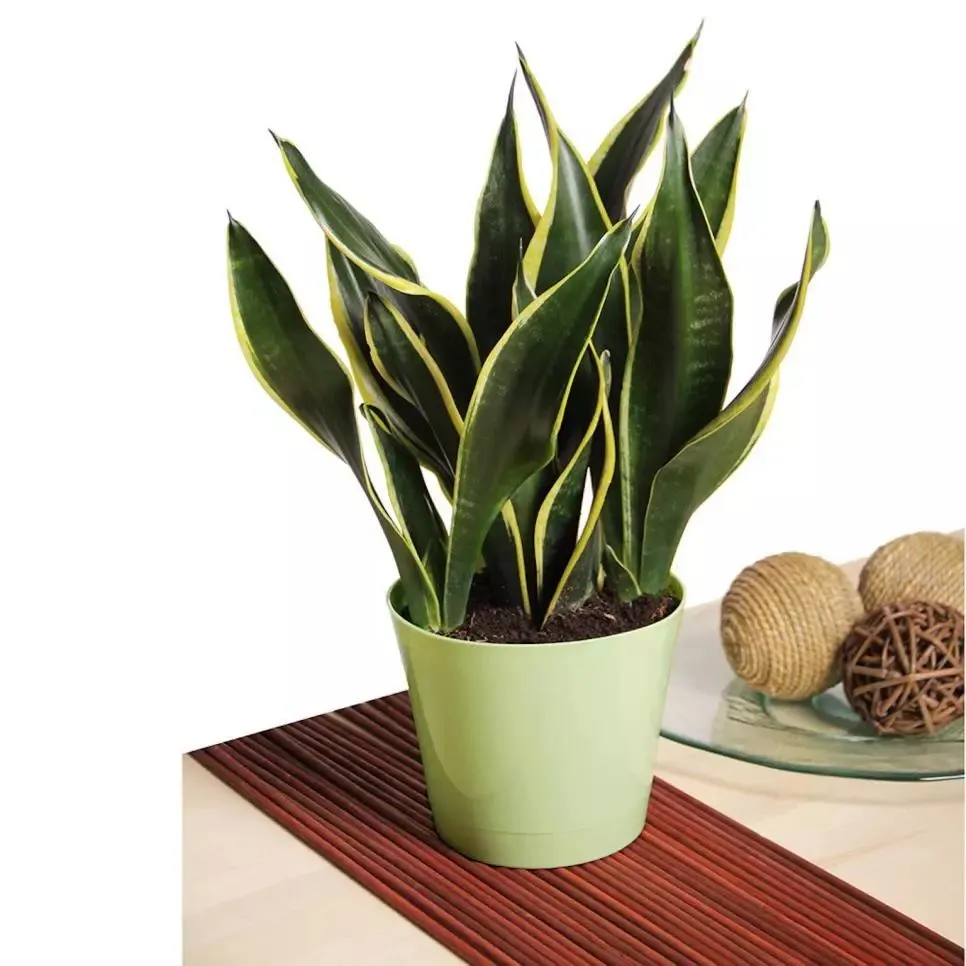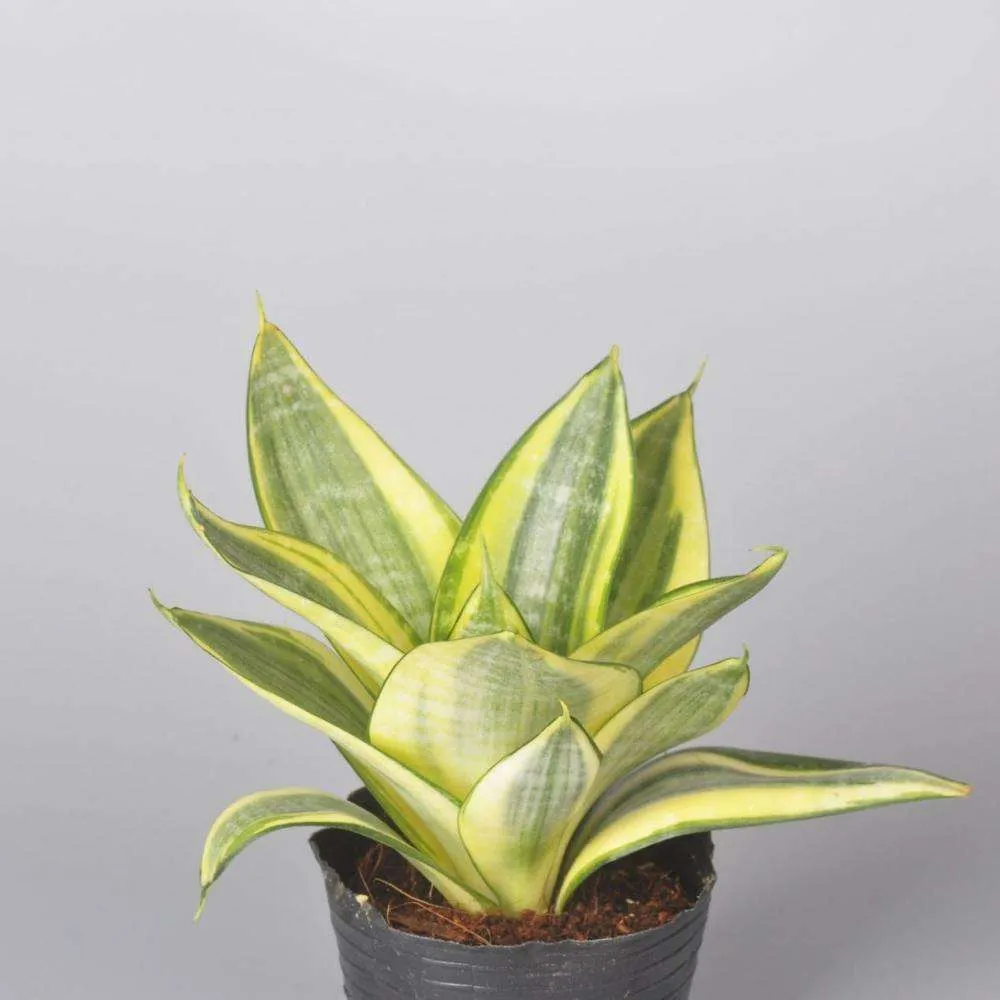How Often to Water Snake Plant (Sansevieria Trifasciata)
Written by Ivy
Dec 16 2022
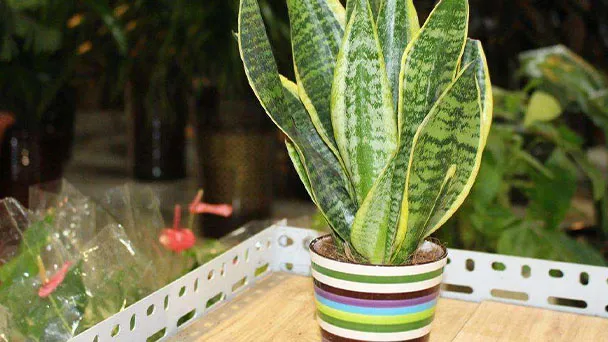
Many friends will ask how often the snake plant is watered? However, no matter what plants we take care of, we can't use time to decide whether to water snake plant. Not only snake plant, but all plants are the same. When there is no potting art, these plants grow in nature, and when it rains is unpredictable. Watering snake plant potted plants is affected by many factors, There is no unified standard, only pouring according to the actual situation is the best method.
Read More:
During the high temperature period in summer, the water evaporates very quickly, so we should water snake plant sufficiently and timely to keep the basin soil moist. In addition, we should spray water on the leaves of snake plant to moisturize and cool down. Generally, we can water it every 5-7 days.
In autumn, the temperature will drop slowly. At this time, it is necessary to reduce the watering amount of snake plant and control the basin soil to be slightly dry, so watering snake plant every 15 days is enough.
In winter, snake plant will enter the dormancy period. At this time, watering needs to be controlled. In winter, the soil should be kept dry, so watering once a month is enough. In addition, watering is best along the edge of the flower pot to avoid watering to the center of the leaves. In addition, watering should be based on the weather conditions. If it is in the rainy season, watering can not be used, and drainage measures should be taken.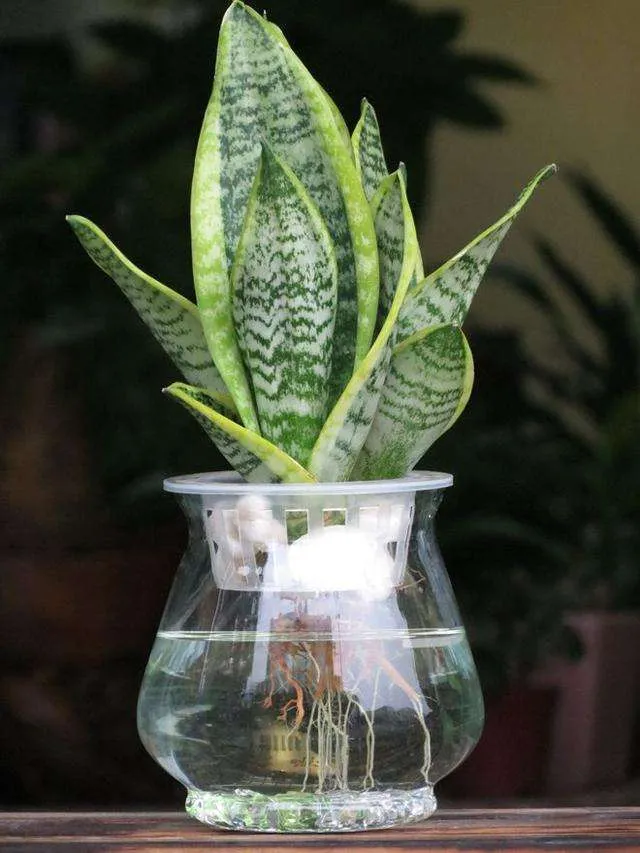
In addition, when it rains in summer, we need to move snake plant to a shelter from the rain. If we don't move to a shelter from the rain, we also need to pour out the accumulated water in the flowerpot in time to prevent the accumulation of water and rotten roots.
Watering snake plant is to know that there is water discharged from the basin bottom. Watering can make the plant roots absorb water. If you only pour a little water every time, it will cause root water shortage for a long time.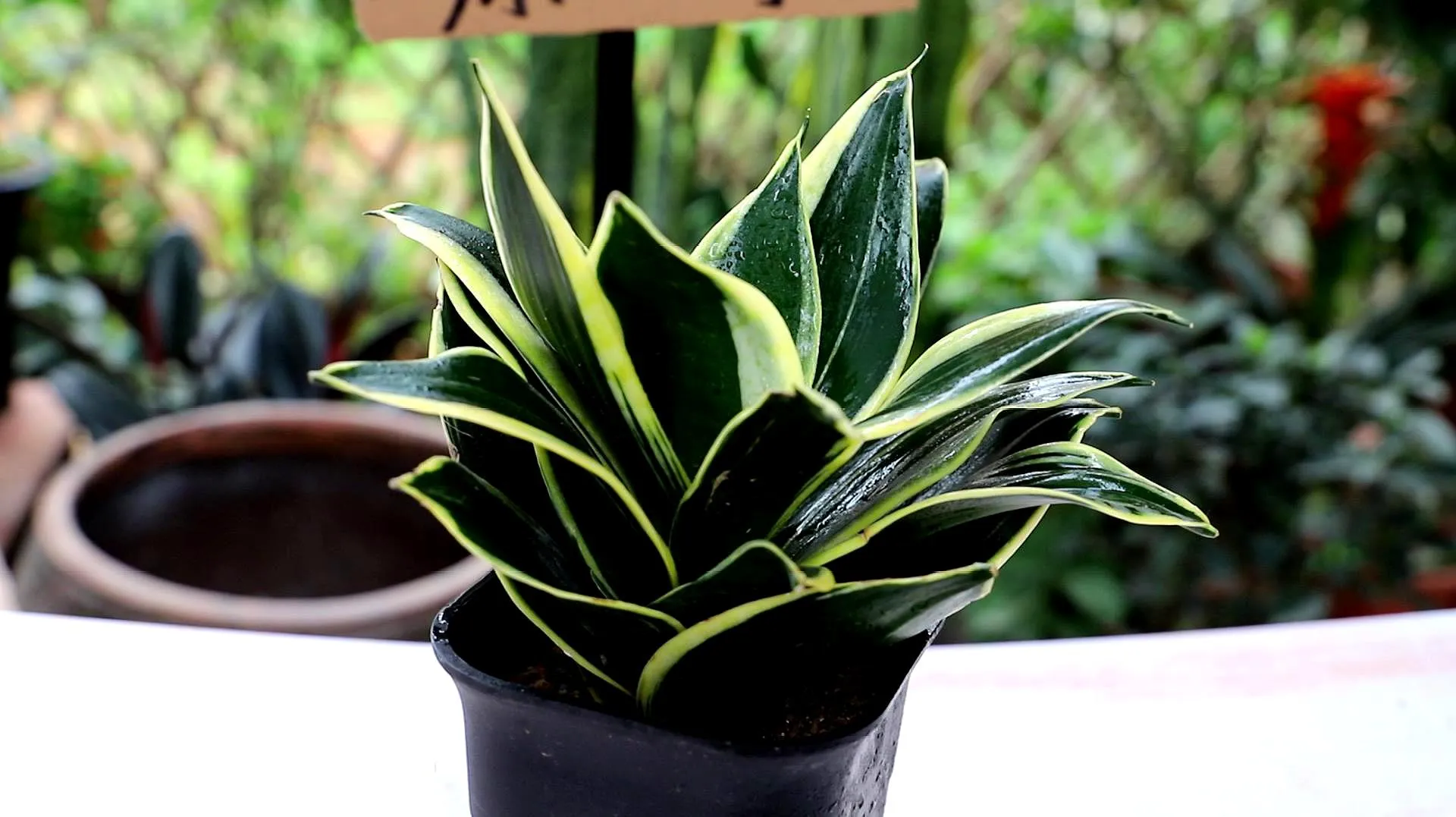
Read More:
When to Water Snake PlantFactors That Impact Watering Snake Plant FrequencySeasonsTemperatureHumidity LevelsLocation of Your PlantType of Potting MixType of PotSize of The PotThe Golden Rules of WateringKeep the Soil Evenly MoistAllow the Soil to Dry Between WateringsAvoid Using Tap Water directlyDon't Water the LeavesHow Long Can A Snake Plant Go Without Water?What's The Best Type Of Water For Snake Plants?
When to Water Snake Plant
As long as the soil on the basin surface of snake plant is dry, water it. If the pot soil is watered before the surface is dry, if it accumulates for a long time, the root of underwatered snake plant will be suffocated because the soil at the bottom of the pot is too wet, and then the root will slowly rot due to long-term soaking. On the contrary, if the basin soil and even the bottom soil are dry but not watered, the root of overwatered snake plant will wither due to excessive water shortage. At this time, watering is basically "no way to return to heaven". Therefore, when the soil on the surface of the pot of potted plants is dry, water snake plant.Read More:
Factors That Impact Watering Snake Plant Frequency
Seasons
Spring is the season of snake plant rhizome germination. At this time, it is necessary to water more to keep the basin soil moist as much as possible, so water it every 10 days.During the high temperature period in summer, the water evaporates very quickly, so we should water snake plant sufficiently and timely to keep the basin soil moist. In addition, we should spray water on the leaves of snake plant to moisturize and cool down. Generally, we can water it every 5-7 days.
In autumn, the temperature will drop slowly. At this time, it is necessary to reduce the watering amount of snake plant and control the basin soil to be slightly dry, so watering snake plant every 15 days is enough.
In winter, snake plant will enter the dormancy period. At this time, watering needs to be controlled. In winter, the soil should be kept dry, so watering once a month is enough. In addition, watering is best along the edge of the flower pot to avoid watering to the center of the leaves. In addition, watering should be based on the weather conditions. If it is in the rainy season, watering can not be used, and drainage measures should be taken.
Temperature
When the temperature is lower than 10 ℃, we should avoid watering snake plant, because snake plant is afraid of cold and waterlogging. Therefore, if you forcibly change the basin for watering under the condition of low temperature, it is easy to cause the death of snake plant. But if we have to change the basin. We can move snake plant to a warm room for basin changing.
Humidity Levels
In summer, there is always a lot of rain, and sometimes even cloudy days. In this case, it is not necessary to water snake plant. Because the air humidity is very high, snake plant needs less water.In addition, when it rains in summer, we need to move snake plant to a shelter from the rain. If we don't move to a shelter from the rain, we also need to pour out the accumulated water in the flowerpot in time to prevent the accumulation of water and rotten roots.
Location of Your Plant
We should not think that if snake plant is placed in the same place for a long time, its surrounding environment will not change. In fact, the environment around potted plants will change with the seasons, climate and sunshine throughout the year. Therefore, it is necessary to carefully observe the environmental conditions of the area where snake plant is placed, and how the dryness of basin soil changes when the season, climate and sunshine change in a year, so as to adjust the right time to water snake plant.Type of Potting Mix
The number of pores between clay particles is small and narrow, so it is difficult for water to infiltrate after watering, and when the clay soil is dry, it will form hardening and cracking, damaging the root system of snake plant. The ability of soil to retain water and fertilizer can be greatly improved if an appropriate amount of clay is added to sandy soil. Therefore, if your snake plant soil is cohesive soil, you can add an appropriate amount of sandy soil to improve the soil's ability to retain water and fertilizer.Type of Pot
Generally, the mud tile basin is rough, and the basin wall has many fine pores, which has strong water permeability. The pottery basin, porcelain basin and plastic basin have fine texture and poor water permeability. Therefore, for the pots of the same size of snake plant, the watering times and amount of rough flower pots should be more and more, while pottery and porcelain pots should not be watered too much and frequently, and the watering times and amount of old tile pots should also be less.Size of The Pot
The small basin has limited capacity, less soil content and less water storage. The small basin always loses water and dries faster than the large basin. Therefore, the small basin of snake plant should be watered more frequently and faster than the large basin, and the amount of watering each time is a little less. If we plant snake plants of the same size in pots of different sizes, the watering times of large pots should be less, but the amount of watering each time should be more.The Golden Rules of Watering
Keep the Soil Evenly Moist
Watering snake plant should not only water the surface, but also water the bottom soil, that is, the water needs to penetrate into the root of the plant and can be discharged from the holes at the bottom of the snake plant basin. In this way, it can ventilate the soil in the snake plant basin, so as to promote the respiration of roots.Allow the Soil to Dry Between Waterings
Allow the soil to dry between waterings can feed most plants. Of course, this is a prerequisite. To ensure that the snake plant soil is loose, breathable and well drained, some hardened soil should be loosened and then watered.Watering snake plant is to know that there is water discharged from the basin bottom. Watering can make the plant roots absorb water. If you only pour a little water every time, it will cause root water shortage for a long time.
Avoid Using Tap Water directly
The tap water in most areas contains fluorine and chlorine compounds, which are some sterilization and disinfection substances. Chlorine is easy to damage the snake plant and make the soil alkaline, so we'd better store the flower watering in a container and use it after 3 days, so that the compounds in it can completely volatilize.Don't Water the Leaves
When watering snake plant, we should not often water its leaves. It is a desert plant with strong drought tolerance. Frequent watering will lead to rotten roots and affect its growth. At ordinary times, we can wipe snake plant leaves with a wet cloth, which can also achieve the effect of moisturizing. If the snake plant blade is directly poured with water, it is easy to pour into the blade cluster, which will lead to rotten core.
How Long Can A Snake Plant Go Without Water?
Snake plants cannot be watered for a long time. Although snake plants is a plant native to Africa and has strong drought resistance and strong adaptability, three months is too long. If you don't water for a long time, snake plants can easily lead to death. If you don't water for three months in winter, there is no problem. However, if it is in summer, there will be no problem of water shortage in a short time. It needs to be watered at least once a week.What's The Best Type Of Water For Snake Plants?
We water snake plants with rainwater. If not, we can also use rice washing water, beer and well water. Rainwater contains a large amount of dissolved oxygen, which can increase the nutrient absorption efficiency of snake plants. Rice washing water contains a lot of nutrients, beer is rich in CO2, and well water contains a lot of minerals, which can provide nutrients for the growth of snake plants.Read More:
- How Much Light Does Snake Plant Need
- How To Fix Snake Plant Root Rot
- Underwatered Snake Plant - Signs And How To Fix
- How To Save Overwatered Snake Plant
- Snake Plant: Grow & Care for Sansevieria Trifascia
- How to Get a Snake Plant to Bloom with Simple Ways
- Is Snake Plant Poisonous to Cats - How to Prevent
- What Are the Benefits of Snake Plants - Everything You Need to Know
- How to Reroot A Snake Plant With Simple Steps
Latest Updated
- Benefits of Bugleweed - 7 Science-backed Health Benefits
- Bugleweed Dangers & Side Effects - Is It Poisonous?
- How to Plant Evergreen Trees - What You Should Know
- When to Plant Evergreens - Grow Guide for Evergreen Trees
- 12 Wonderful Evergreen Shrubs for Your Garden
- 12 Popular Evergreen Plants with Pictures for Beginners
- When And How To Prune A Lilac Bush Like a Pro
- How to Grow & Care for Lilac Vine (Hardenbergia Violacea)
- Japanese Lilac Tree (Syringa Reticulata) Care & Propagation Guide
- Shumard Oak Pros and Cons - What to Know
Popular Articles
- Winter maintenance of Antirrhinum Majus
- How to Grow Terminalia Mantaly Tree
- How to Grow and Care for Crossostephium Chinense
- How to grow Antirrhinum Majus in spring
- Peristeria Elata (Dove Orchid) Profile: Info & Care Guide
- Underwatered Snake Plant (Sansevieria Trifasciata) - Signs And How To Fix
- How to Care for Brazilian Jasmine Plant (Mandevilla Sanderi)
- How to Grow & Care for Graptopetalum Purple Delight in Summer
- Rosa Chinensis (China Rose): Plant Growing & Care Tips
- How to Care for Baby Sun Rose (Aptenia Cordifolia)
